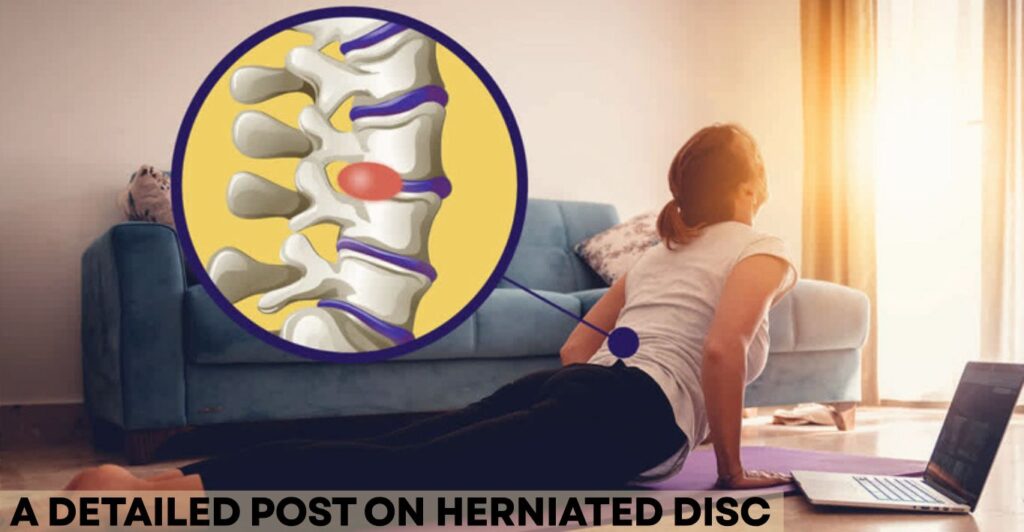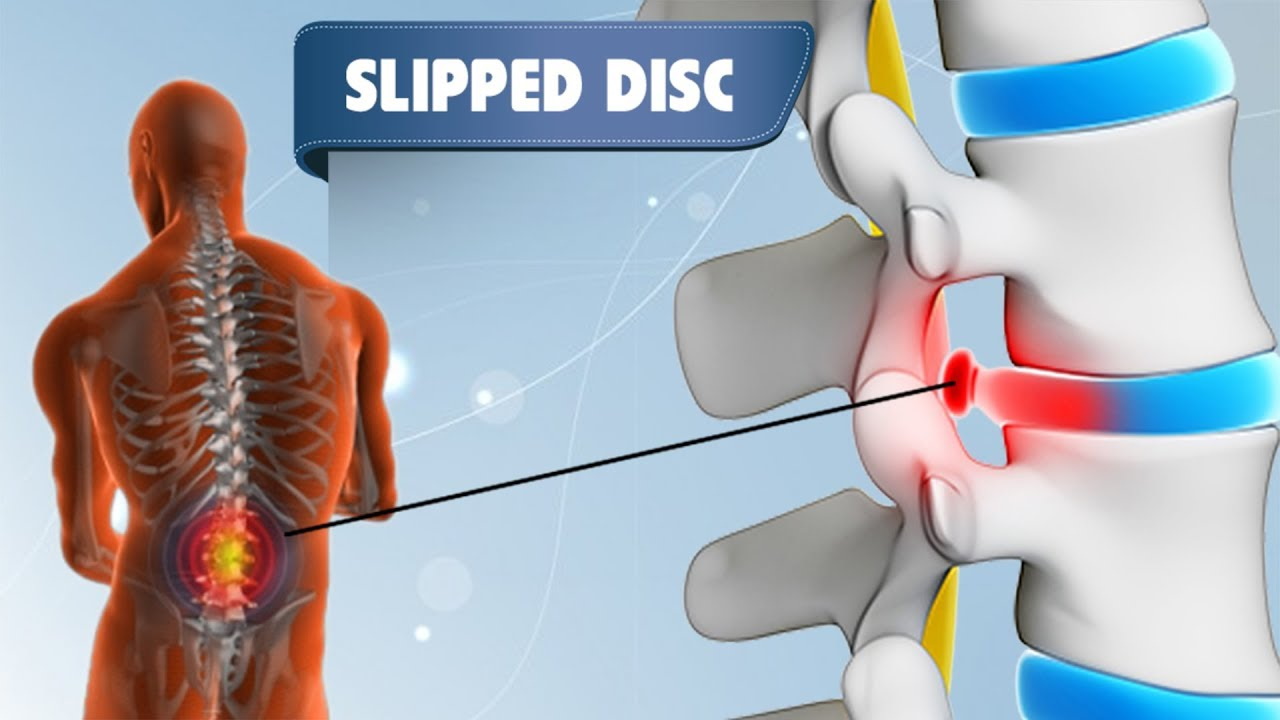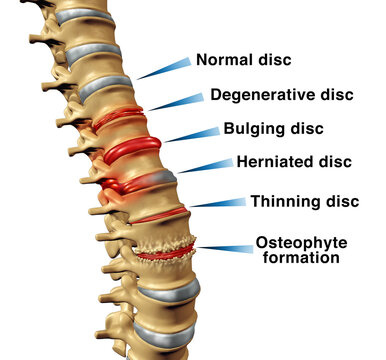
WHAT IS A HERNIATED DISC?
Your spine is made of bones (vertebrae) stacked on each other. Between them are discs that act like cushions. Each disc has a tough outer layer and a soft inner part (nucleus). When the disc gets damaged and the inner material pushes out, it’s called a herniated or slipped disc. This can press on nerves, causing pain and other issues.
SYMPTOMS:

◼️Muscle Weakness: Nerve compression reduces strength and function.
◼️Difficulty in Walking: poor coordination or pain while moving.
◼️Burning or Aching: Indicates nerve irritation.
◼️Numbness: Loss of sensation in compressed nerve areas.
◼️Standing or Sitting: Pain worsens when standing or sitting.
CAUSES:
◼️Poor Posture: Sitting or standing the wrong way strains the spine.
◼️Smoking: Reduces blood supply, causing discs to wear out faster.
◼️Too Much Sitting or Wrong Lifting: Long sitting or lifting heavy things incorrectly hurts the discs.
◼️Being Overweight: Extra body weight puts more pressure on the spine.
◼️Getting Older: Discs naturally weaken and wear down with age.
TYPES:

◼️Normal Disc: Healthy spine with no issues.
◼️Degenerative Disc: Natural wear and tear over time, reducing flexibility.
◼️Bulging Disc: Disc bulges out, may press on nerves, causing discomfort.
◼️Herniated Disc: Outer layer of disc ruptures, inner material may leak.
◼️Thinning Disc: Disc loses height,
reducing spinal support.
Extra changes: Bone spurs (osteophytes) and endplate hardening can also happen, causing stiffness.
For more information, talk to a healthcare provider.
If you have any questions about WHAT IS A HERNIATED DISC? Please feel free to leave a comment.
Do share this blog with your friends and family!
